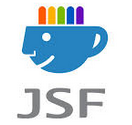Introduction In the current arena of Globalization, the user base of a web application has been extensively increasing day by day. With this huge increase in the user base, it is very essential that the applications are very well understood and interpreted by people of different cultures and different languages. It is then, the whole …
Internationalization
Implement Internationalization and Localization in JSF
Internationalization and Localization are important features for an web based application. Internationalization is implementing the features in your application to support multiple languages. Localization is creating text in a specific language that is presented through an internationalized application also read: Introduction to JSF JSF Interview Questions Request Processing Lifecycle phases in JSF The following example …

